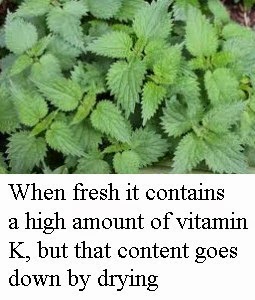Most people regard stinging nettle, Urtica dioica, as a bothersome weed and generally try to tidy it away from the environment. You can however make tasty dishes of this plant and you can use it to improve your health.
The plant is composed of a central root system, horizontal and generally hided stalks growing out from the root and vertical stalks growing up from those horizontal ones with leaves and flowers. The leaves sit around the stalks all the way to the top in young sprouts. Eventually there develops a top with a lot of green flowers sitting around. The root and the horizontal stalks live for many years, and the vertical ones grow up each spring.
You should harvest this plant and cook it as a dish and use it as a health remedy in the form of teas or extracts.
HOW TO GATHER AND COOK STINGING NETTLE
Young stalks that are in the process of growing up in the springtime are the best material to use from this plant. You can however also use the soft tops of older stalks and you can harvest only the leaves by gripping around the stalks and pulling the leaves off with an upward movement. When harvesting this plant you must of course use glows on your hands.
You then must flush the material with water to remove sand and soil and cut it up in smaller pieces. Then you can boil it as a vegetable. You must not spill the water from the boiling process since that contains a lot of good nutrients. Use it in your dishes or drink it as a tea. When boiled for some time, the plant do not sting any more.
You can also dry the plant and then store it for later use either as a tea or as a vegetable. You can press the juice out of it or you can make extracts of stinging nettle.
Stinging nettle can also be used as a very well tasting ingredient in soups. To use it as a remedy for diseases, it is often best to make teas and extracts from it. By making teas and extracts, you can use much more plant material than you manage to consume as a dish and thereby increase the dose of the effective substances. For this type of use you can also process the vertical stalks.
THE NUTRIENTS FOUND IN THIS PLANT
There are much calcium and much iron in stinging nettle and the plant contains more protein than most other vegetables. When fresh it contains a high amount of vitamin K, but that content goes down by drying.
There are much trace minerals in stinging nettle because the plant grows in nutritious soils that are not over-exploited. Many of these trace minerals are necessary for a good health. The good effect from the plant upon the health is partly due to the high content of trace minerals.
HOW STINGING NETTLE IS GOOD FOR YOUR HEALTH
Dishes, teas and extracts made from this plant help to strengthen the health generally and to keep the body young. It has an especially good rejuvenating effect upon the brain functions and for the skin. The rejuvenating effect upon the skin can often be seen after a few days if you consume a good portion of stinging nettle each day.
Stinging nettle promotes a good kidney function and enhances urine production. It is a good remedy for prostate hyperplasia. The improvement of urin production can alleviate water retention and help by heart and circulatory problems. The plant may also give better milk production for nursing mothers.
Stinging nettle counteracts inflammation and pain, and can therefore be used against inflammatory diseases like rheumatic conditions and allergies. It is a good remedy for respiratory conditions like sinusitis, rhinitis, hey fever and asthma. It is good to sooth irritated skin with, and is a good remedy for eczema, and for these purposes teas and watery extracts of the herb can be both drunk and applied onto the skin.
The plant may help to cure anemia and other blood deficiencies partly due to the iron content. Juices, teas and extracts of newly harvested plants are good against bleeding because of the high content of vitamin K. Remedies made from the dried plant has lost the blood stilling effect. Drugs made from the dried plant are instead good for thinning of the blood.
DOES THIS HERB HAVE ANY HARMFUL EFFECTS?
No serious effects of stinging nettle have been reported. The stinging sensation by touch from the plant at the bare skin is of course the most obvious side effect of stinging nettle. Coming in contact with the fresh plant can also cause eczema that lasts for some days.
Sometimes stinging nettle mildly irritates the digestive tract, and materials from the flowering herb or from plants having flowered may irritate the urinary organs. You should therefore be cautious about the amount you use of the plant after it has begun flowering.
You should be cautious when using the plant as a medicine if you use blood thinners, use medication for high blood pressure or during pregnancy.
Knut Holt is an internet consultant and marketer focusing on health items. ----TO FIND natural supplements to help slimming and to help for diseases like: Cold, flu, allergies, acne, eczema, hypothyroidism, fatigue, depression, hemorrhoids, joint pain, hypertension, high cholesterol, circulatory problems, digestive ailments, rheumatism and more, PLEASE VISIT:---
----Free to reprint with the author's name and link.
Article Source: http://EzineArticles.com/?expert=Knut_Holt

No comments:
Post a Comment